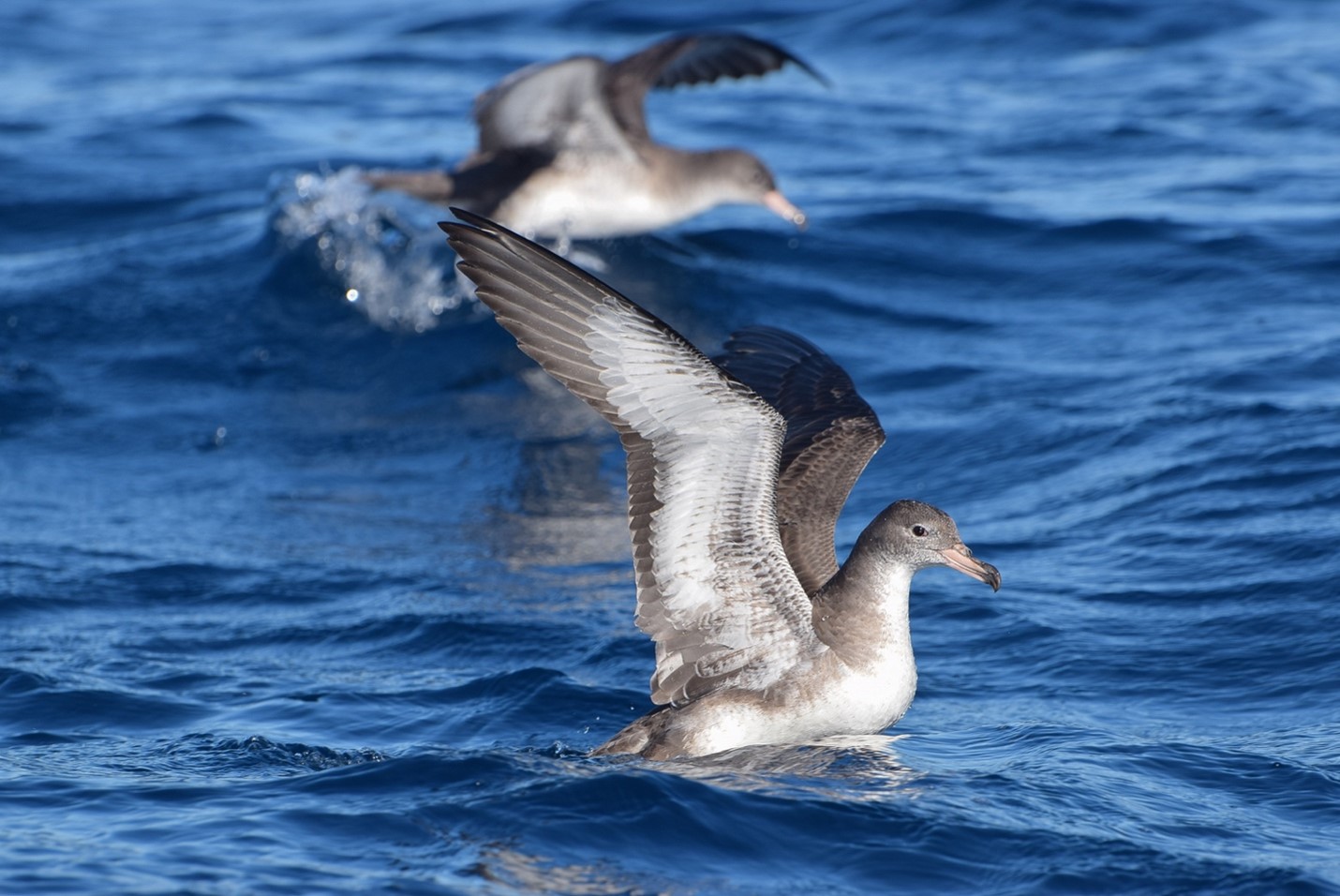
Pink-footed Shearwaters near a fishing vessel, waiting for a meal. Coastal Marine Protected Area, Mar de Juan Fernández
Fardela blanca cercana a un bote de pesca, esperando algo de comida. Área Marina Costera Protegida Mar de Juan Fernández
NOTE: This post continues an occasional series that features photographs of the 31 ACAP listed species, along with information from and about their photographers. Here Héctor Gutiérrez Guzmán of Oikonos Ecosystem Knowledge writes of the Vulnerable Pink-footed Shearwater / Fardela Blanca in Chile Ardenna creatopus he has worked with for 13 years in the Juan Fernández Archipelago, Chile. Hector’s original text in Spanish has not been edited; the English translation by Google Translate has been edited for readability.
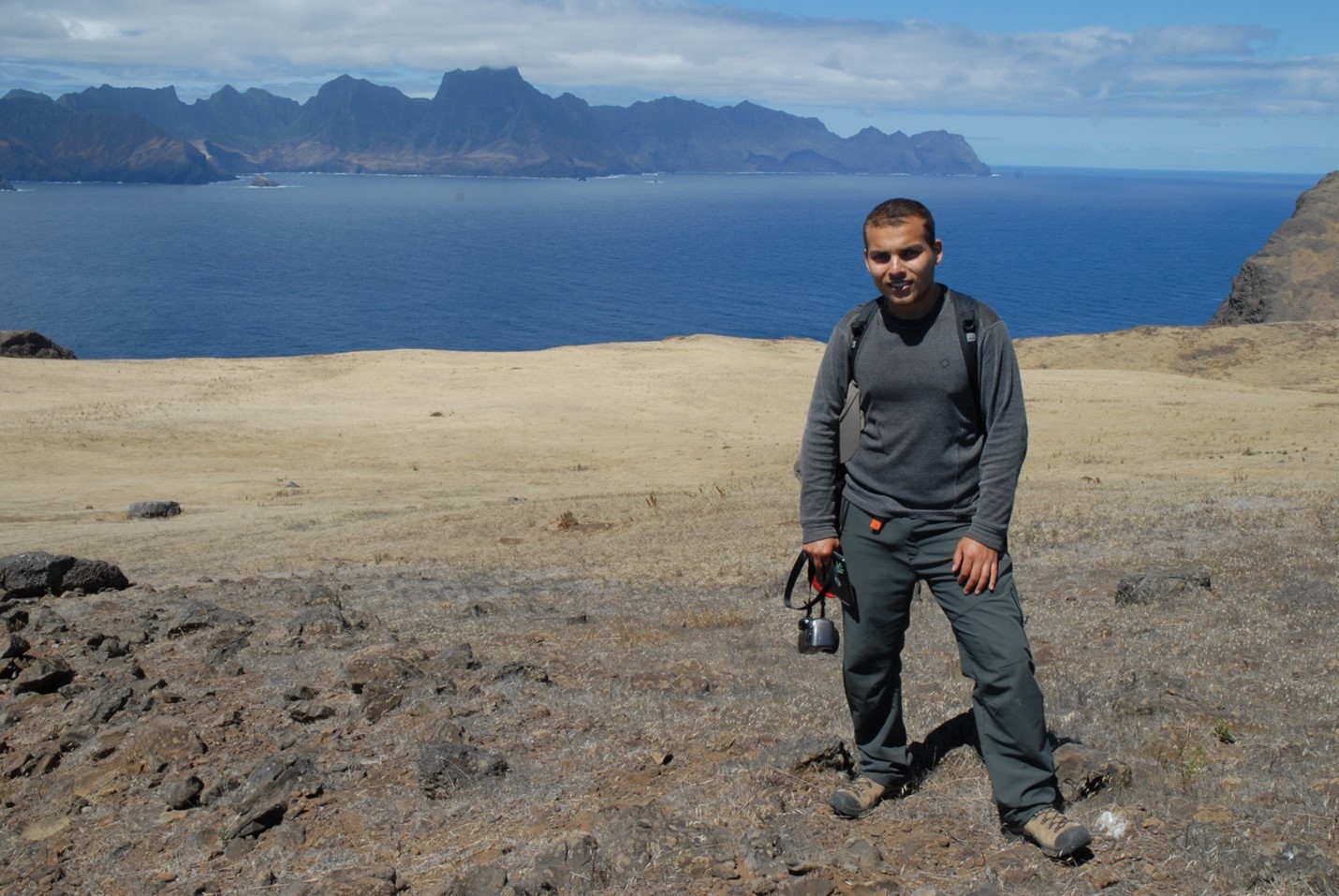
My first visit to Isla Santa Clara in 2014, where I met the shearwaters and saw my first chick
Mi primera visita a la isla Santa Clara (2014), lugar donde conocí a las fardelas y vi al primer polluelo
My personal connection to the Pink-footed Shearwater
Their long flights across the Pacific, travelling thousands of kilometres and returning each year to their home to nest, is what excites me the most about this species and many other seabirds. The shearwaters have taught me to remember where I come from and where I belong, to trust that when I return home there will be the protection and care I need. Pink-footed Shearwaters are a regular part of my life. Every day I mention the word fardela at least thtree times, including when I sing like them. Since 2014, I have worked together with Oikonos and the community of the Juan Fernández Archipelago to protect the breeding ecosystem of the shearwater. It fills me with emotion when the children of the town of San Juan Bautista learn things that we have investigated for years, and when they learn of their migratory routes, what they eat and the life of a shearwater. Communicating the scientific knowledge of the life of these birds and their relationship with the place where they live, drives me to create new challenges and inspire more people to take care of them. The at-sea movements of the shearwaters also invite me to discover the world, to never stop travelling and meeting new friends in different regions.

The Juan Fernández Archipelago in the South Pacific is the breeding habitat for 30% of the world population of the Pink-footed Shearwater
El archipiélago Juan Fernández, en el Pacífico Sur, es el hábitat de nidificación para el 30% de la población mundial de fardela blanca
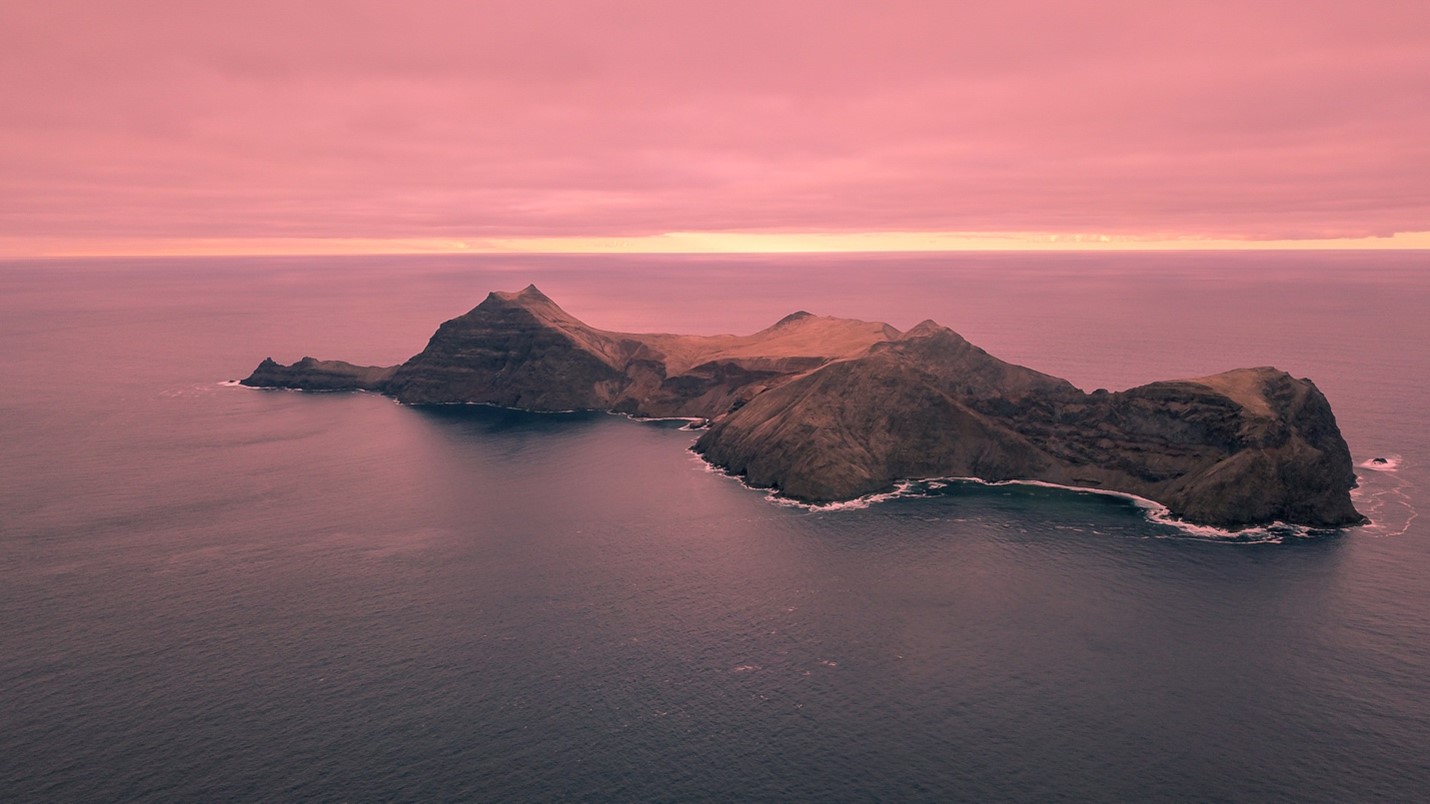
Isla Santa Clara, one of the important breeding sites for the Pink-footed Shearwater in Chile
Isla Santa Clara, uno de los importantes sitios de nidificación de la fardela blanca en Chile
My encounters
I had never heard of a Pink-footed Shearwater until I saw a chick for the first time on Isla Santa Clara, when I was invited by Oikonos to monitor the burrows during the nesting season in 2014. I barely reacted when I saw that chick come out of the nest. Apparently, it was a few days before starting its first flight, when I took my camera and managed to capture a ball of grey fluff that was looking at me. I never thought that day would mark my life forever. Nor did I think that the next few years were going to be dedicated to studying and carrying out conservation actions to protect the breeding sites and the threatened ecosystems where the shearwaters breed. I never imagined that I would think about them all day and that I would communicate about the importance of seabirds to the entire world. That day, when that chick looked at me, my life changed forever. Today, every time I see a chick through the burrewscope camera we use to monitor reproductive success, I thank it for having awakened in me that desire to protect our planet and transmit the message through scientific communication and photography. Every time I get on a boat I always go with many memory cards and batteries to take many photographs and videos that will serve to admire and learn more about this species. We currently work with multiple organizations to reduce one of its great threats, light pollution. It is a great challenge when people want more and more light, but Chile has advanced protection of its skies, biodiversity and people's health, by modifying regulations that had become obsolete and were not in line with environmental challenges. It motivates me to help my country protect our ecosystems and reduce the impacts on seabirds. There is certainly a long way to go, but we are moving forward together with the communities that live in the same places as the Pink-footed Shearwaters.

Reproductive monitoring in a breeding colony on Isla Santa Clara, Juan Fernández Archipelago, Chile
Monitoreo reproductivo en una de las colonias de nidificación en la isla Santa Clara del Archipiélago Juan Fernández en Chile
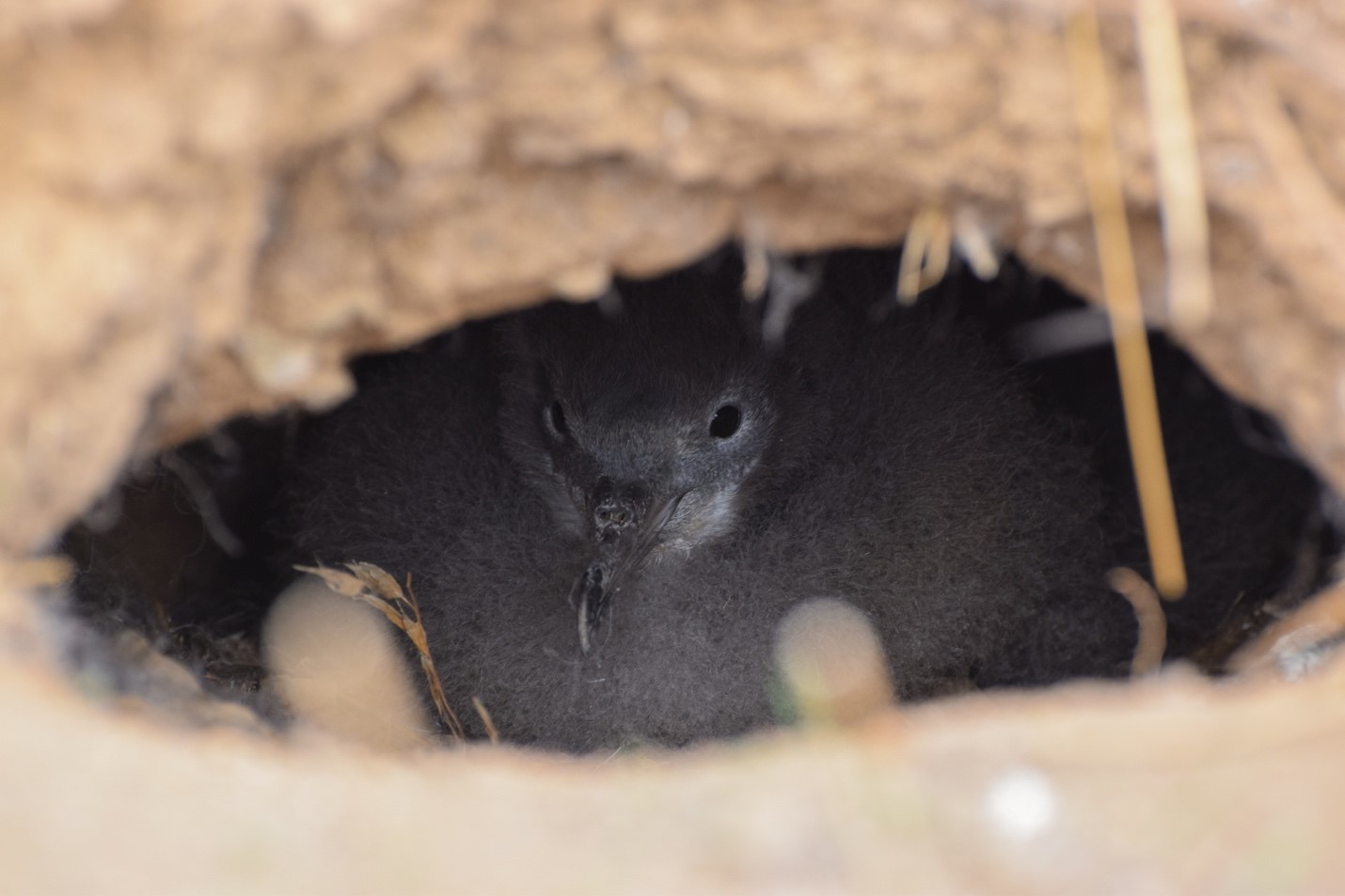
A Pink-footed Shearwater chick a few days after starting its first flight from Isla Santa Clara in 2014
Un polluelo de fardela blanca a pocos días de iniciar su primer vuelo. Isla Santa Clara en 2014
Un largo vuelo por el Pacífico, recorriendo miles de kilómetros y volviendo cada año a su hogar para nidificar, es lo que más me emociona de esta especie y de las aves marinas en general. Las fardelas me han enseñado a recordar de dónde vengo y cuál es mi lugar, confiar en que al regresa a mi casa estará la protección y el cuidado que necesito. Las fardelas son parte habitual de mi vida. Todos los días menciono al menos tres veces la palabra fardela, incluso cuando canto como ellas. He trabajado por 6 años junto a Oikonos y la comunidad del Archipiélago Juan Fernández para proteger los ecosistemas de nidificación de la fardela blanca. Me llena de emoción cuando los niños del poblado de San Juan Bautista aprenden cosas que hemos investigado por años. Cuando conocen las rutas migratoria, su alimentación y la vida de una fardela. Transmitir y comunicar el conocimiento científico de la vida de estas aves y cómo es su relación con el lugar donde habitan, me impulsa a crear nuevos desafíos y contagiar a más personas para cuidarlas. Los viajes de las fardelas también me invitan a conocer el mundo, a nunca parar de viajar y encontrar nuevos amigos en rutas diferentes.
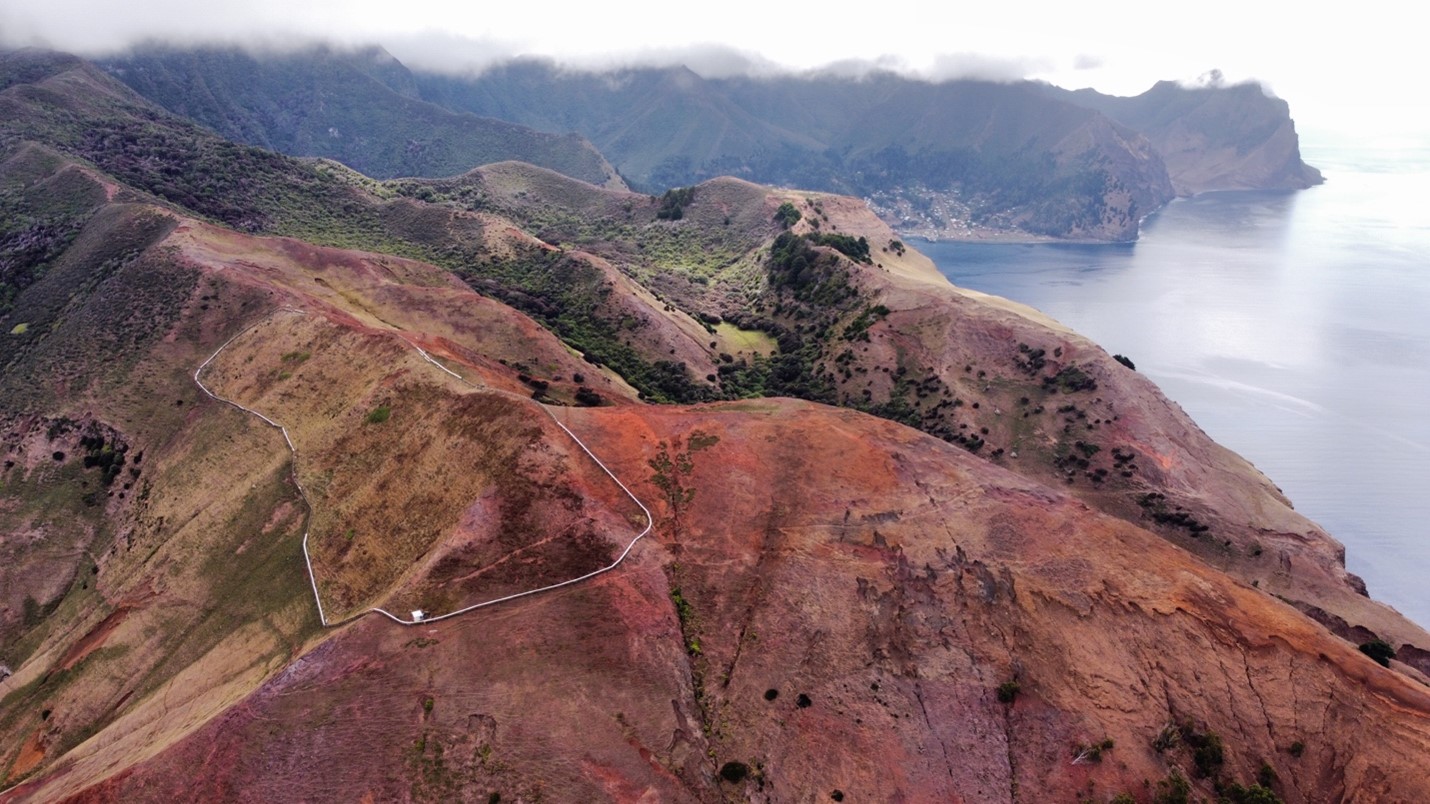
Construction of an exclusion fence to protect the breeding habitat of Pink-footed Shearwaters on Isla Robinson Crusoe
Construcción de un cerco de exclusión para proteger el hábitat reproductivo de fardela blanca en la isla Robinson Crusoe
Nunca oí hablar de una fardela hasta que ví un polluelo por primera vez en la isla Santa Clara, cuando fui invitado por Oikonos a monitorear las madrigueras durante la época de nidificación en 2014. Casi no reacciono cuando ví a ese polluelo salir del nido. Al parecer estaba a pocos días de inciar su primer vuelo, cuando tomé mi cámara y logré capturar una bola de pelusas grises que me miraba. Nunca pensé que ese día marcaría mi vida para siempre. Tampoco pensé que los próximos años los iba a dedicar a estudiar y a realizar acciones de conservación para proteger los sitios de nidificación y los ecosistemas amenazados donde ellas habitan. Jamás pensé en que iba a pensar todo el día en ellas y que iba a comunicar sobre la importancia de las aves marinas para el mundo entero. Ese día, cuando ese polluelo me miró, mi vida cambió para siempre. Hoy, cada vez que veo un polluelo a través de la cámara boroscópica con la que monitoreamos el éxito reproductivo, le agradezco por haber despertado en mí esas ganas de proteger nuestro planeta y transmitir el mensaje a través de la comunicación científica y la fotografía. Cada vez que puedo subirme a un bote, voy siempre con muchas tarjetas de memoria y baterias para tomar la mayor cantidad de fotografías y videos que servirán para admirar y conocer aún más esta especie.
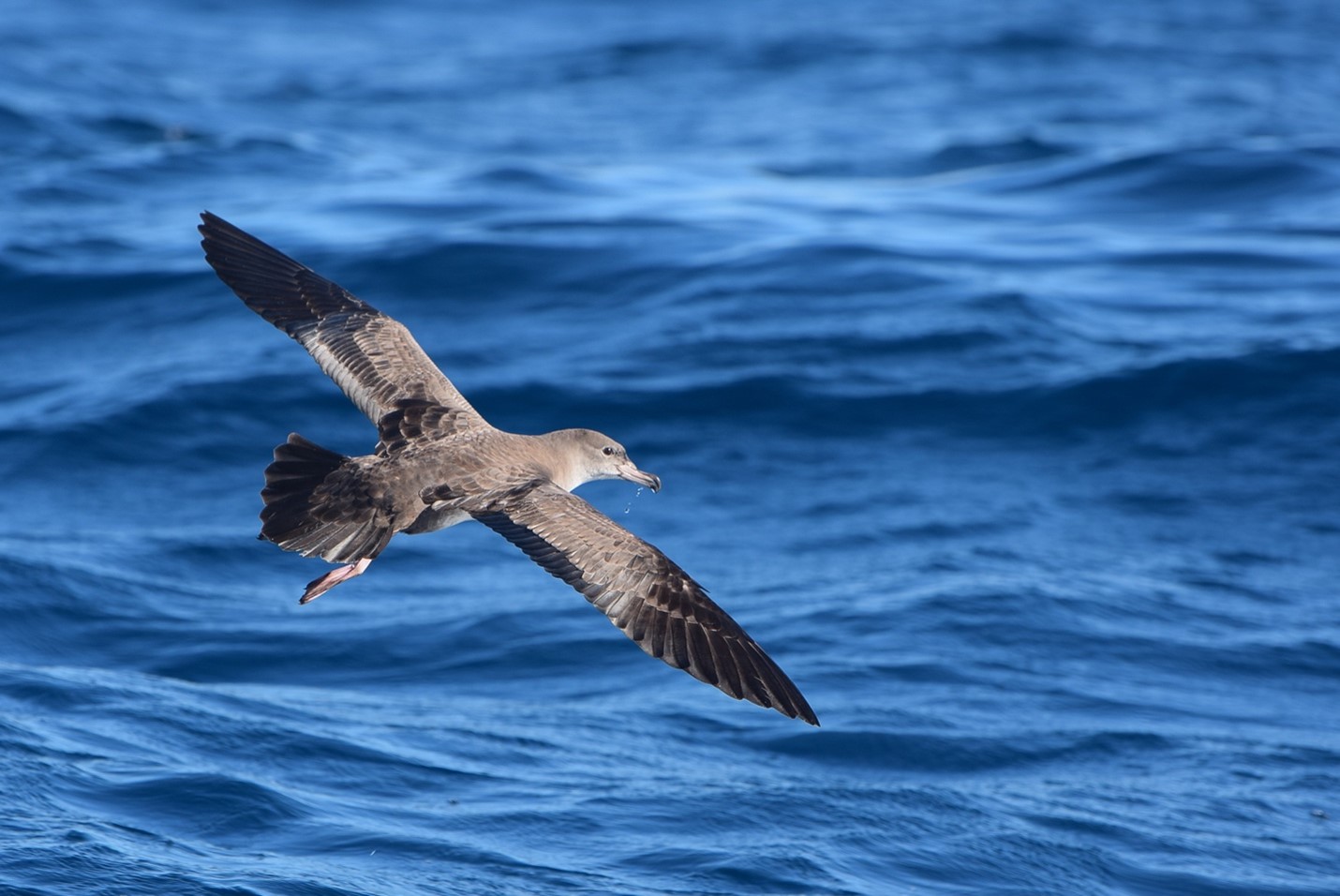
Pink-footed Shearwater in flight. Juan Fernandez Archipelago, Chile
Fardela blanca en vuelo. Archipiélago Juan Fernández, Chile
Acknowledgements
I acknowledge all those who have contributed to our research, especially CONAF, NFWF, Island Conservation, Peter Hodum, Valentina Colodro, and the local Oikonos Team living and working on Robinson Crusoe Island, Paola González, Guillermo De Rodt, Cabila Manríquez, Iva Vásquez, Pablo Manríquez. They have all facilitated these memories and photo opportunities. Editorial thanks to Michelle Hester, Oikonos.
Selected Publications:
Carle, R.D., Fleishman, A.B., Varela, T., Manríquez Angulo, P., De Rodt, G., Hodum, P, Colodro, V., López, V. & Gutiérrez-Guzmán, H. 2021. Introduced and native vertebrates in pink-footed shearwater (Ardenna creatopus) breeding colonies in Chile. PLoS ONE 16(7): e0254416.
[Gutiérrez-Guzmán H.] 2020. Consejo de Ministros aprueba plan para proteger a la fardela blanca. Bienes Comunes. 26 June 2020.
Gutiérrez-Guzmán, H., Ziller, S.R. & Dechoum, M.de.S. 2019. Chemical control of the invasive non-native shrub murtilla Ugni molinae in mountain scrub on Robinson Crusoe Island, Juan Fernandez Archipelago, Chile. Conservation Evidence 16: 27-32.
Héctor Gutiérrez Guzmán, Oikonos Ecosystem Knowledge, Santiago, Chile, 08 June 2022

 English
English  Français
Français  Español
Español